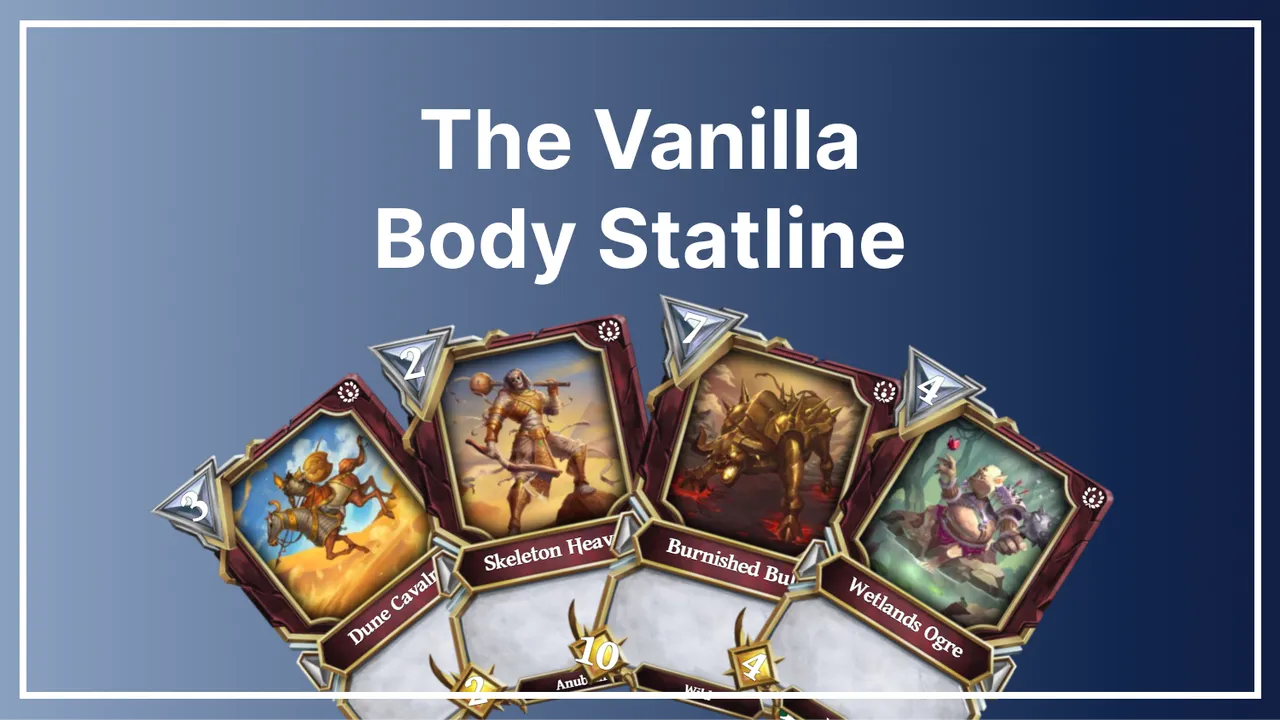
Maybe you've seen the terms "under-statted" or "over-statted" thrown around when discussing why certain cards were cut or put in. Have you wondered what stats are the cards are being compared to? The baseline for comparison would be what I call the "vanilla body" - creatures without any card text. Knowing this can be helpful during deckbuilding since you can figure out how much stats you are trading for card text. Let's dive right in!
Vanilla Body and Card Text
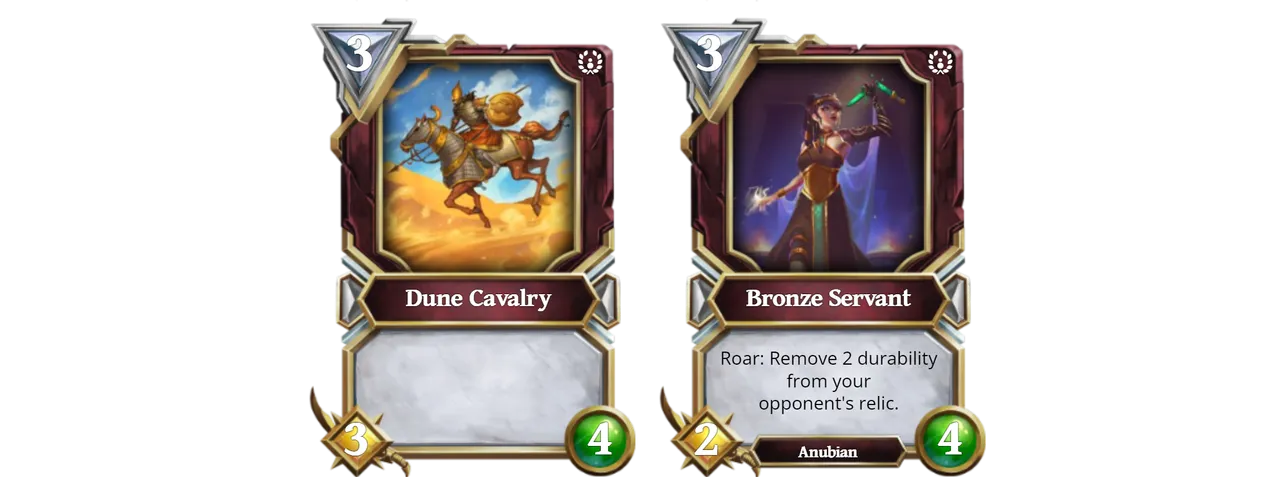
Let's take a quick look at these two 3-cost creatures. The Dune Cavalry is what we can consider as a "vanilla body", with no card text at all. On the other hand, we have a Bronze Servant, which has card text that is beneficial to the player playing it. Comparing the 3/4 Dune Cavalry to the 2/4 Bronze Servant, it is quite clear that we are trading 1/0 in stats for the effect of removing 2 durability from an opponent's relic should we decide to put in a Bronze Servant in place of a Dune Cavalry.
Vanilla Body Stats at Each Mana Cost
Here, I will list down all vanilla bodies that I can find at each mana cost. I will also total up the stat points (attack plus health points) for each mana cost. The total stat points are often good enough to use as a proxy for knowing how strong a card is, barring bad stat allocations like 5/1 or 1/10. Knowing this can help you compare cards at the same cost to figure if they are underpowered or overpowered.
These cards are also all neutral, which means that you should always be comparing creatures that you put into any deck with these statlines.
1-cost
There are no vanilla bodies at 1-cost - this might be good for more diverse gameplay since you are forcing the players to pick card effects for each 1-cost creature they decide to put in their deck. Nevertheless, we can estimate the vanilla body statline by taking a look at a few of these 1-cost creatures.
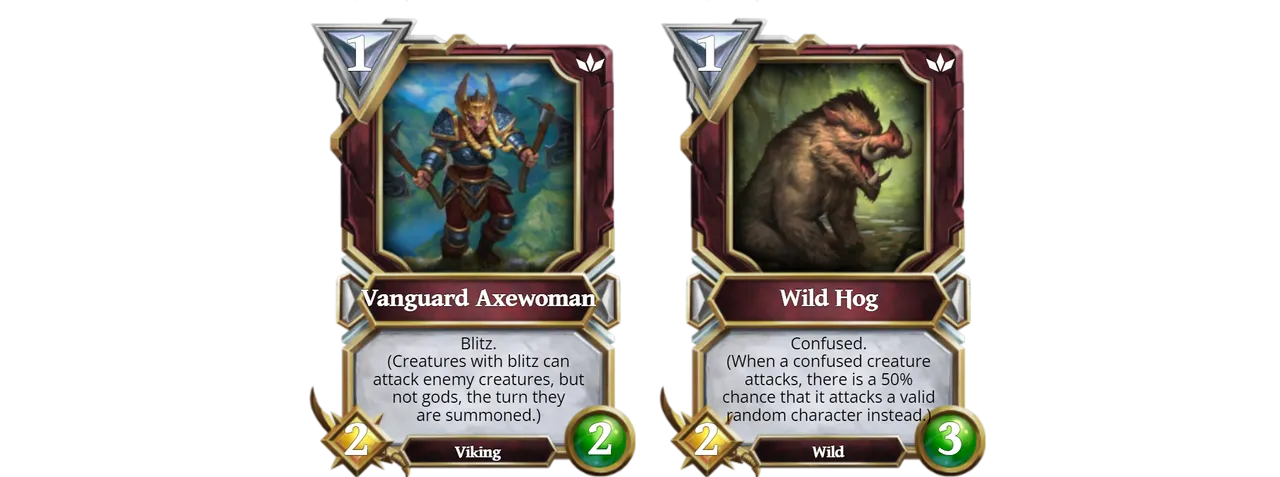
The Vanguard Axewoman has Blitz which is a beneficial card effect, whereas the Wild Hog has Confused which is a detrimental card effect. With just a 0/1 difference in stats, we can estimate the vanilla body statline to be 2/2.5, totaling 4.5 stat points.
2-cost
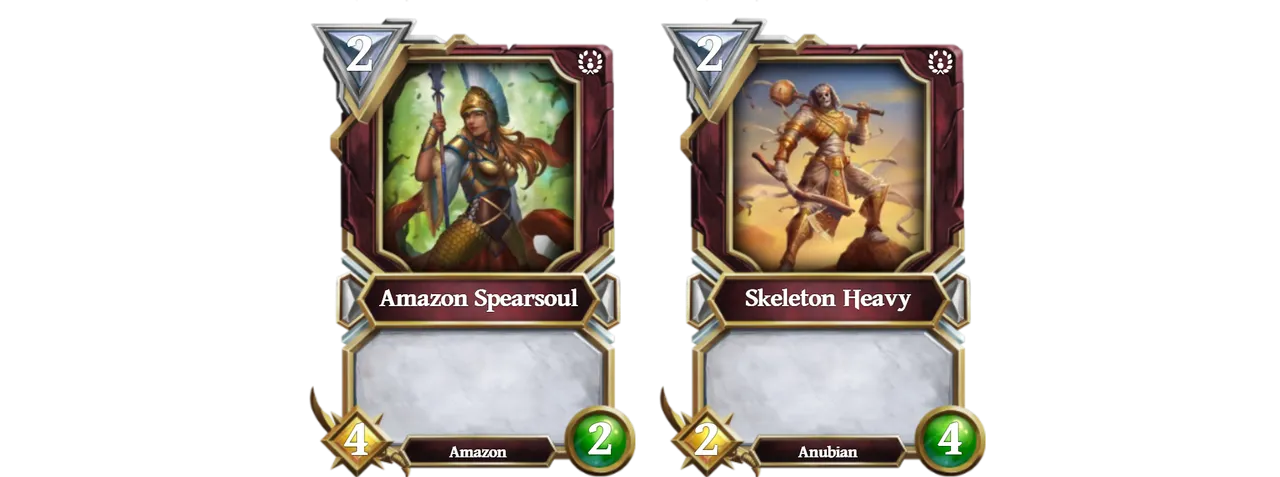
The Amazon Spearsoul and Skeleton Heavy show that the vanilla body statline at the 2-cost spot should be either 2/4 or 4/2, totaling 6 stat points.
3-cost
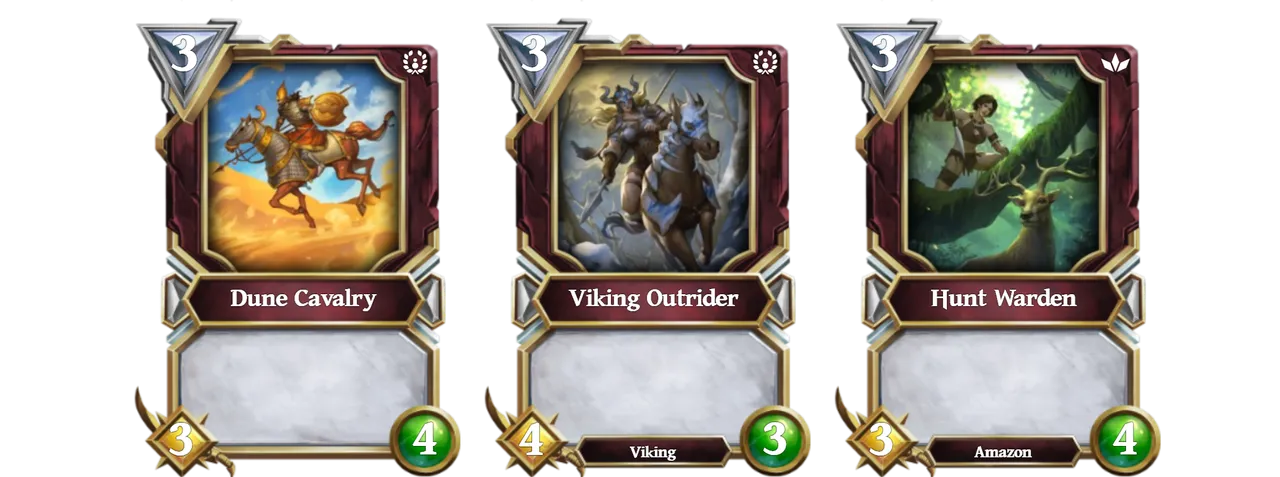
At the 3-cost spot, we have Dune Cavalry, Viking Outrider, and Hunt Warden showing us that a vanilla body has either a 3/4 or 4/3 in stats, totaling 7 stat points.
4-cost

The Wetlands Ogre takes up the 4-cost vanilla body spot with a 4/5 stat line, totaling 9 stat points.
5-cost

At the 5-cost spot, the Helios Battlesworn comes in with a 5/6 statline, totaling 11 stat points.
6-cost

A rare Etherbots set card, the Atlantean Rex sits at a hefty 9/4, totaling 13 stat points.
7-cost

The Burnished Bull charges in with a mighty 10/10 for the 7-cost spot, totaling a staggering 20 stat points.
The Cost of Card Text
Many players, including myself, tend to look for powerful card text when building decks. However, this can lead to picking under-statted creatures without considering the plain vanilla body alternative. Sometimes, your deck doesn't need more situational card text like Ward or Heal your god for 2. Sometimes, all it needs is more powerful creatures on the board. That's where these vanilla body cards come in.
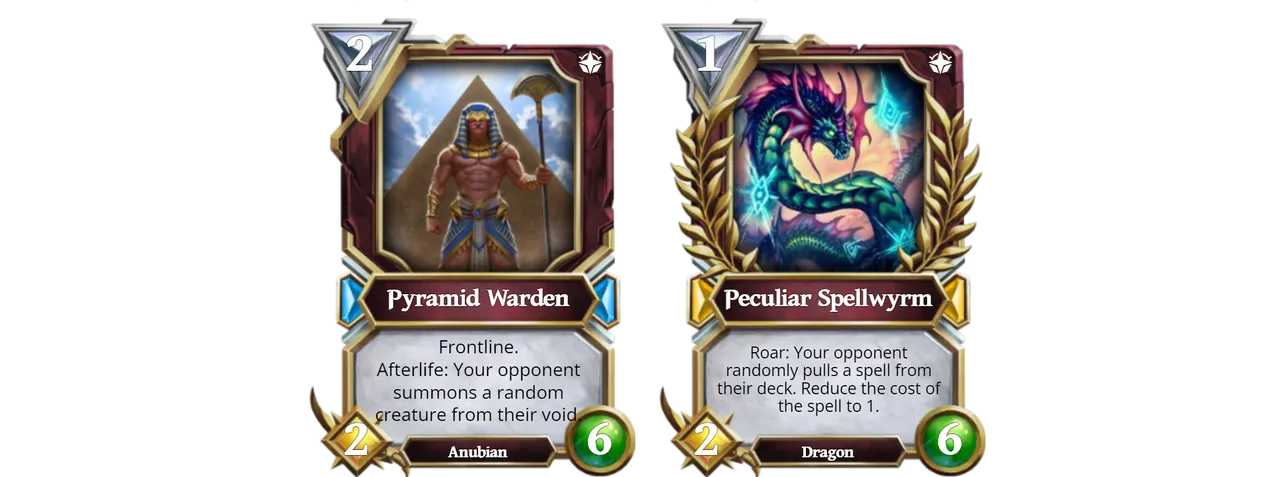
At the same time, detrimental card text like Pyramid Warden's or Peculiar Spellwyrm's does give the creature more stats, but you have to consider whether the drawback is worth the stats.
Concluding Thoughts
The vanilla body statline is an important figure to know when you're building and modifying your decks, allowing you to know when you're overpaying or underpaying for a certain card effect. Card text isn't always worth it, depending on what your deck's ultimate aim is. Hopefully, this knowledge will help you build better decks!
All card art belongs to the Gods Unchained team.
Card images generated with GUListCreator, a tool I made for searching for cards quickly and exporting them to images.